We built our house for LAN parties
This is our basement game room.
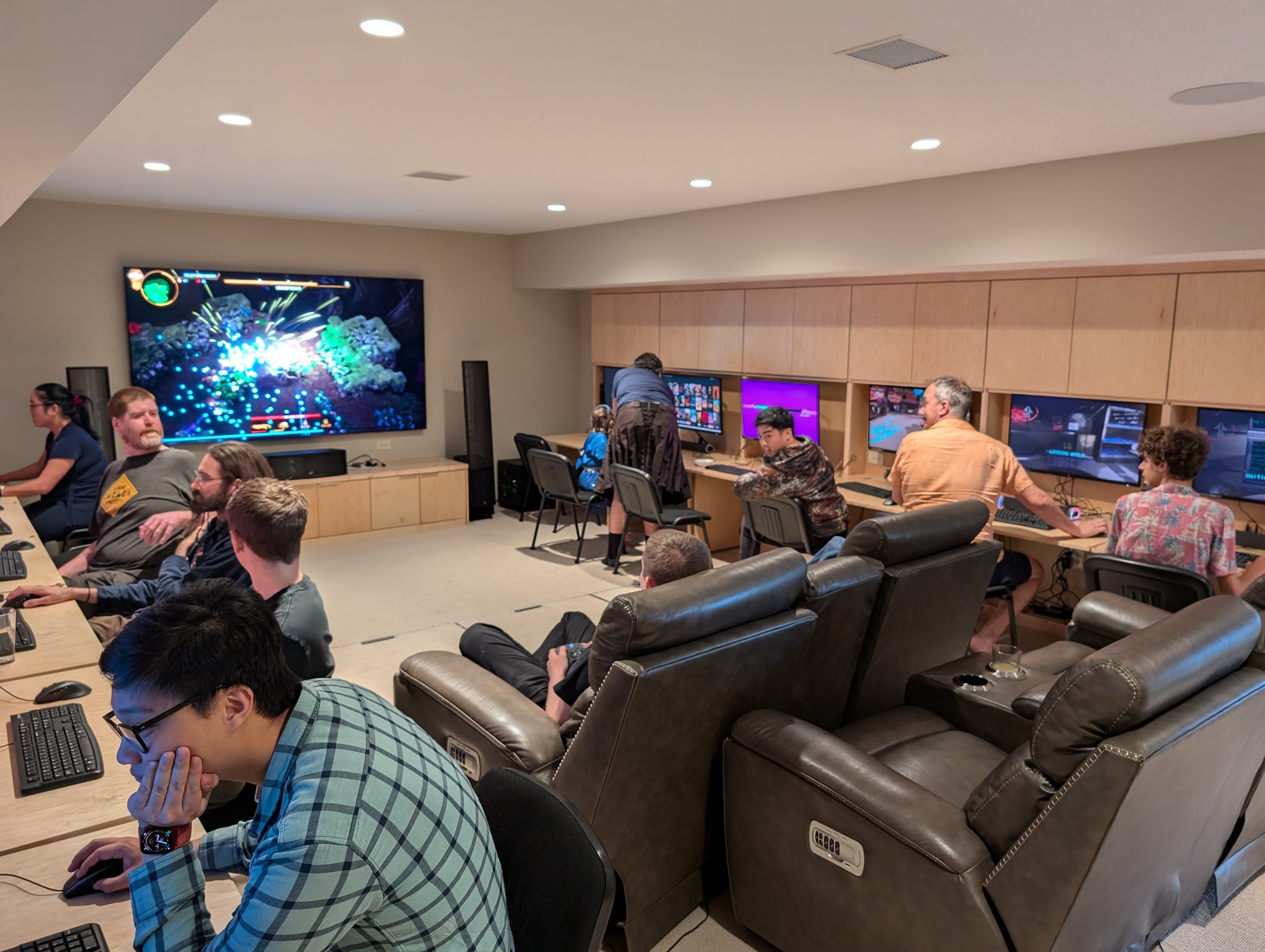
12 PCs are built into the walls.
This is our basement game room.

12 PCs are built into the walls.
These fold up nicely when not in use.
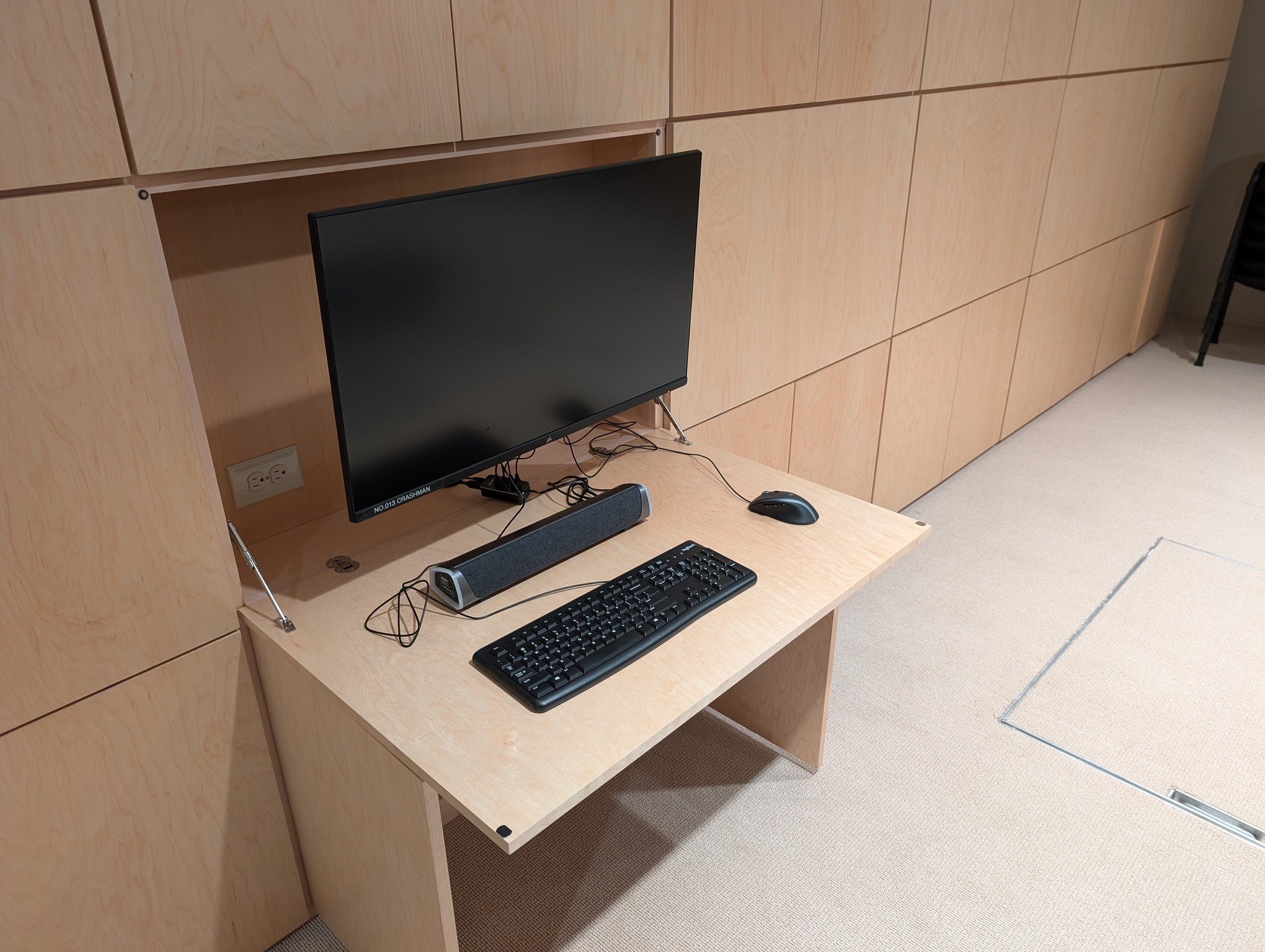
Closed station
Open station
There are DDR pads in the floor.
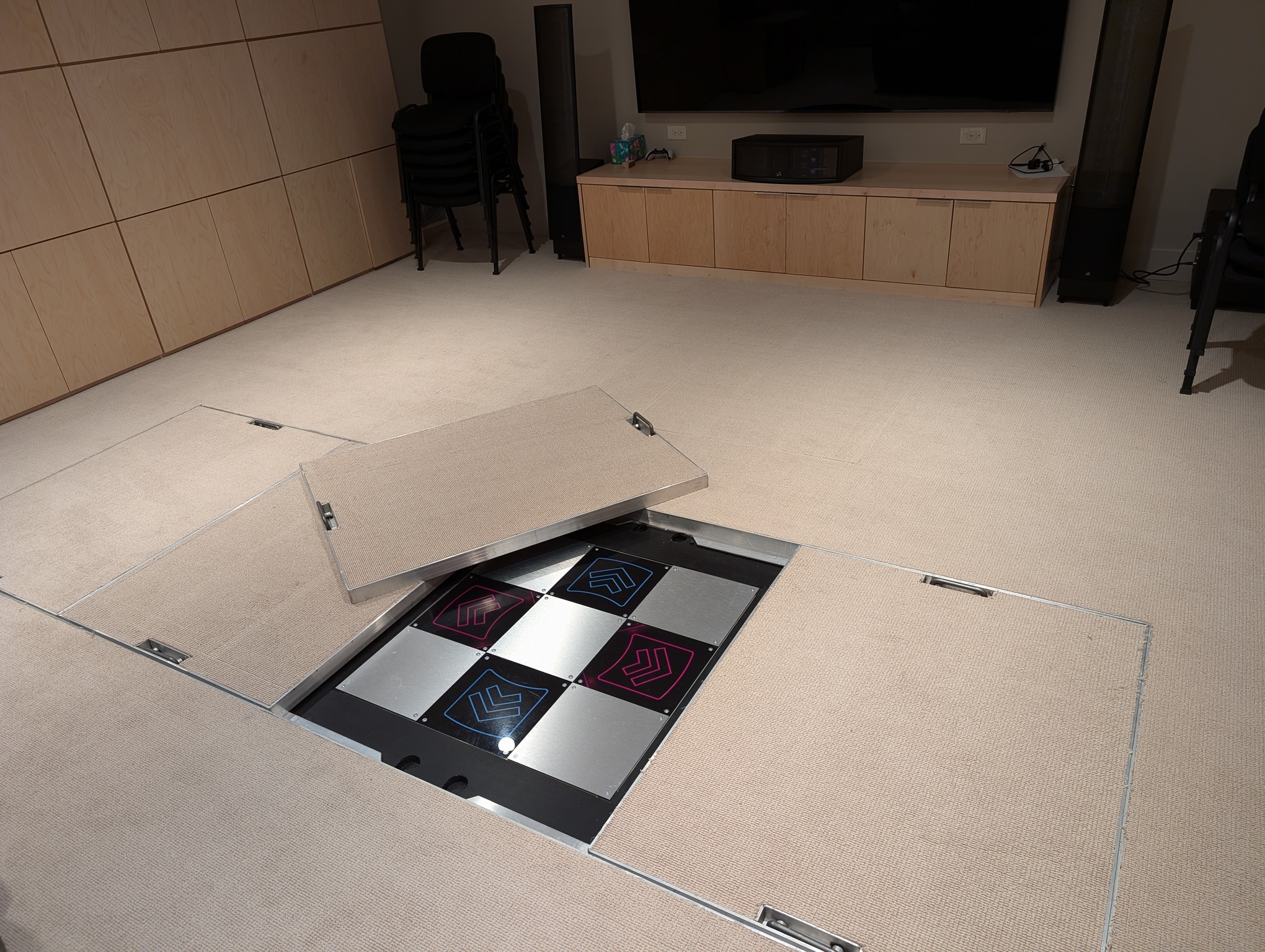
We can game here too.
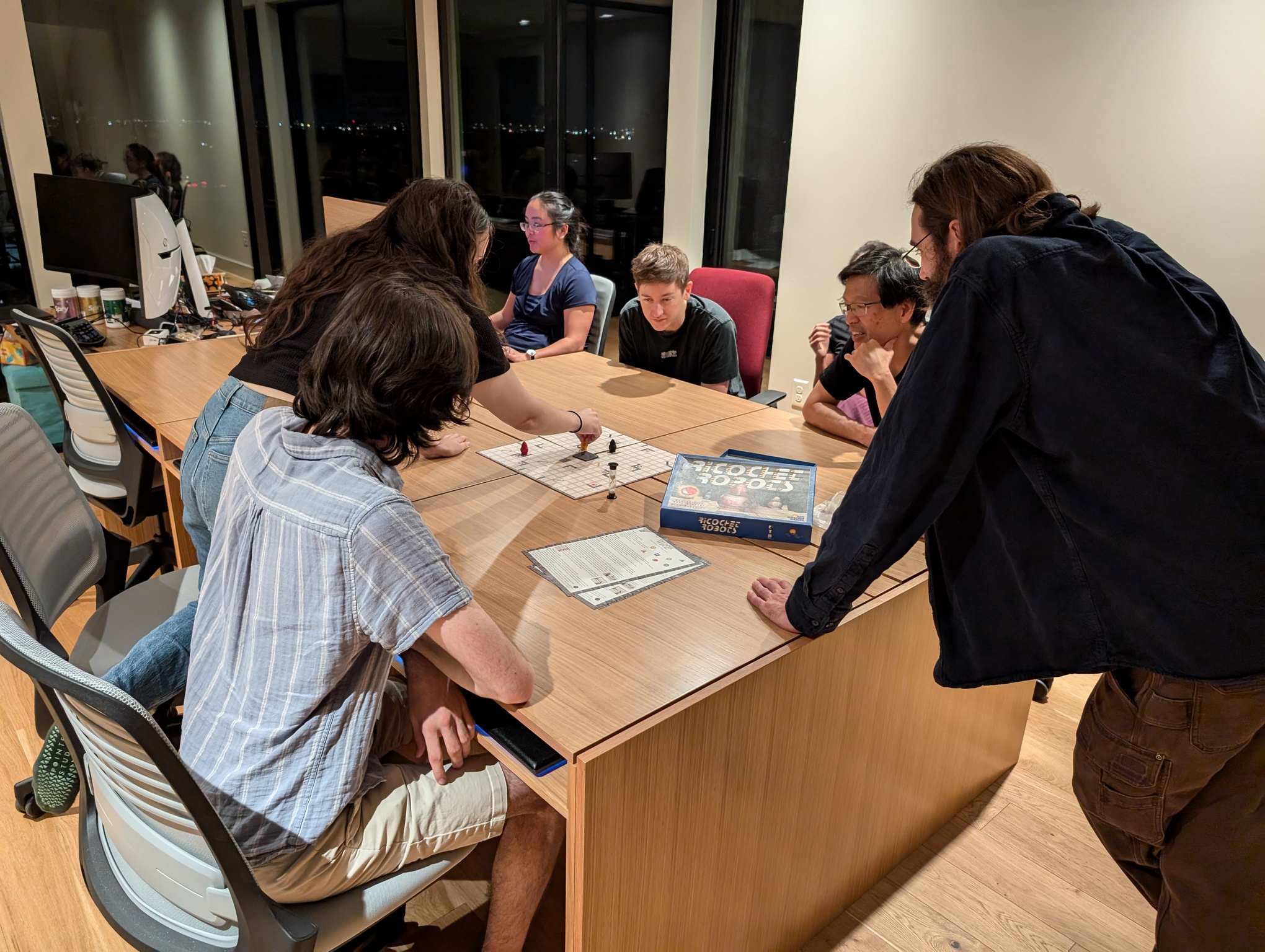
Board games are games, right?
The table also transforms to reveal six more game stations.
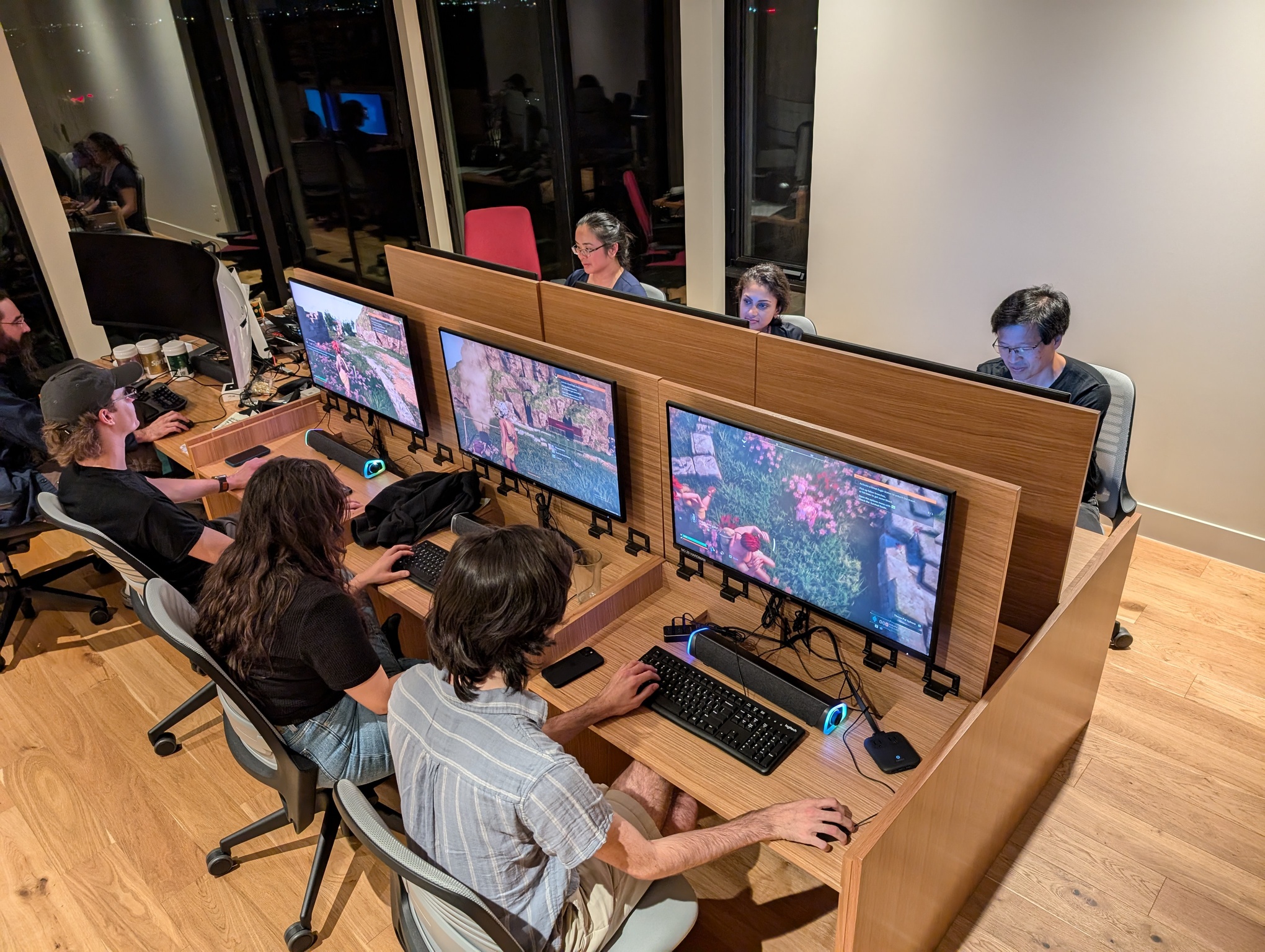
Two sit-stand desks in the back are our personal workstations.
(But that's not me in the seat. That's Lester.)
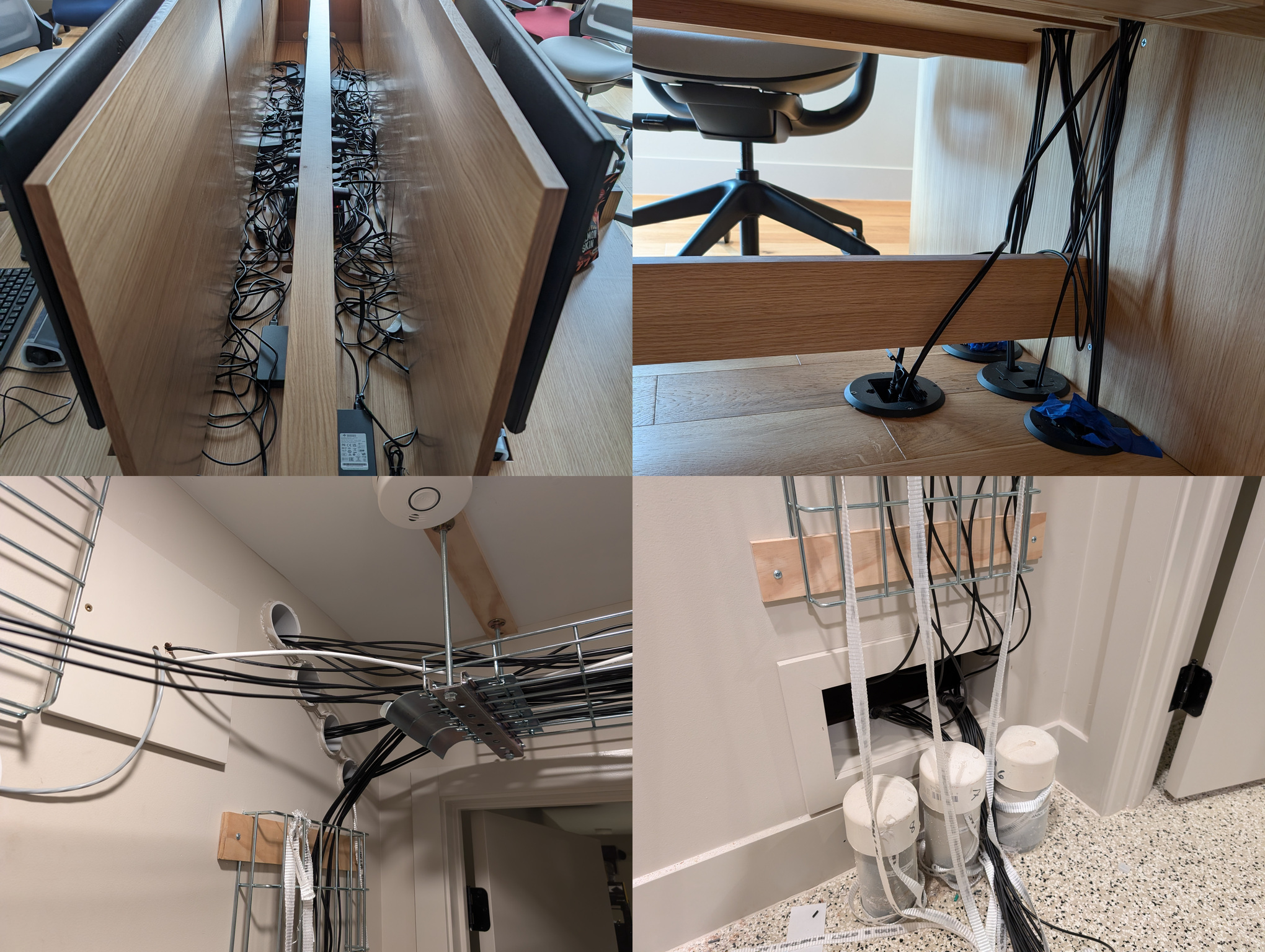
Video and USB cables pass into conduits...
Which eventually lead to...
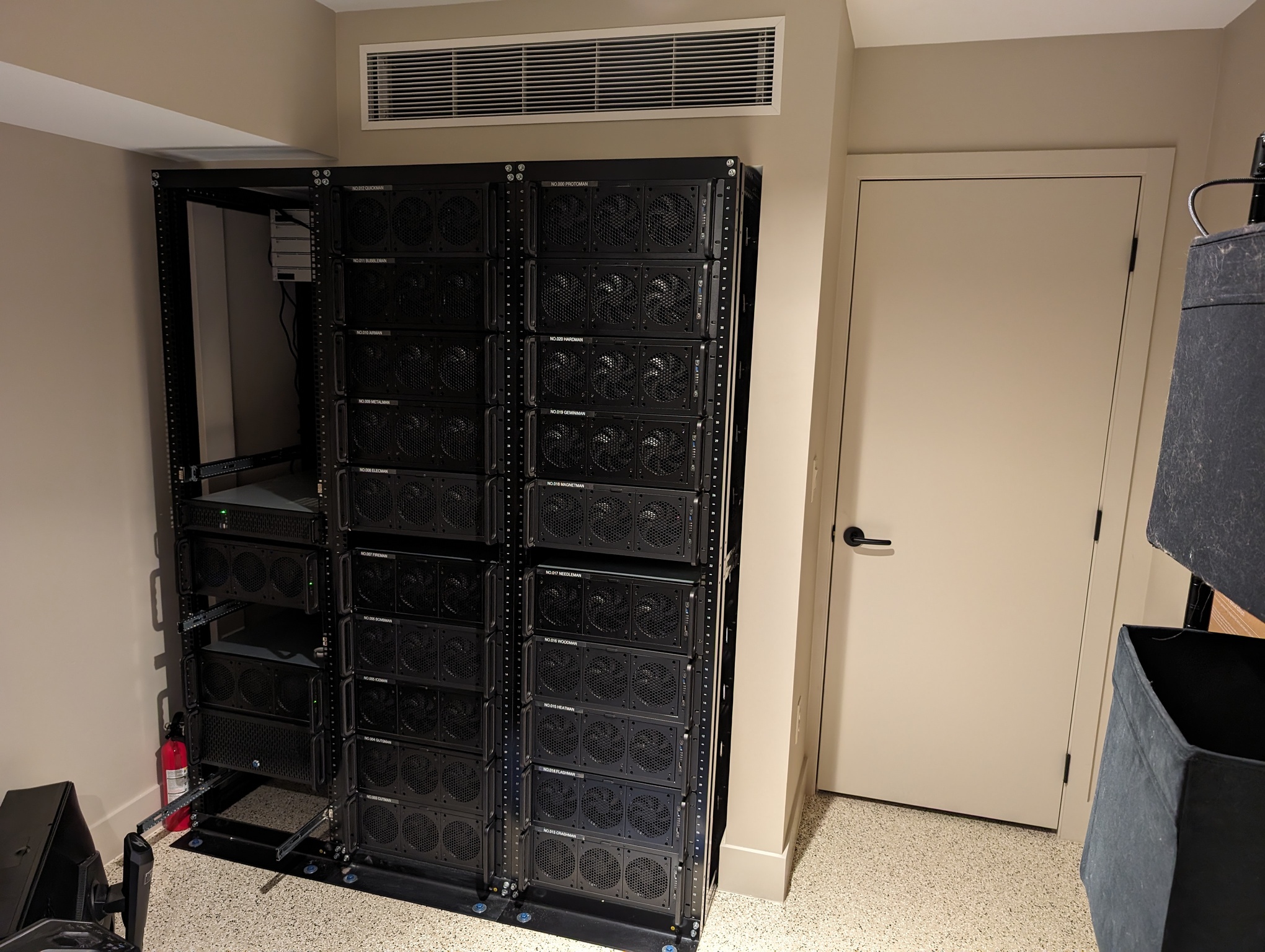
20 identical game machines.
All game machines netboot from a shared disk image on this server.
Our personal desktops
Dedicated A/C intakes from behind the machines and supplies cold air here.
Door leads to the "hot side".
It's actually not that hot.
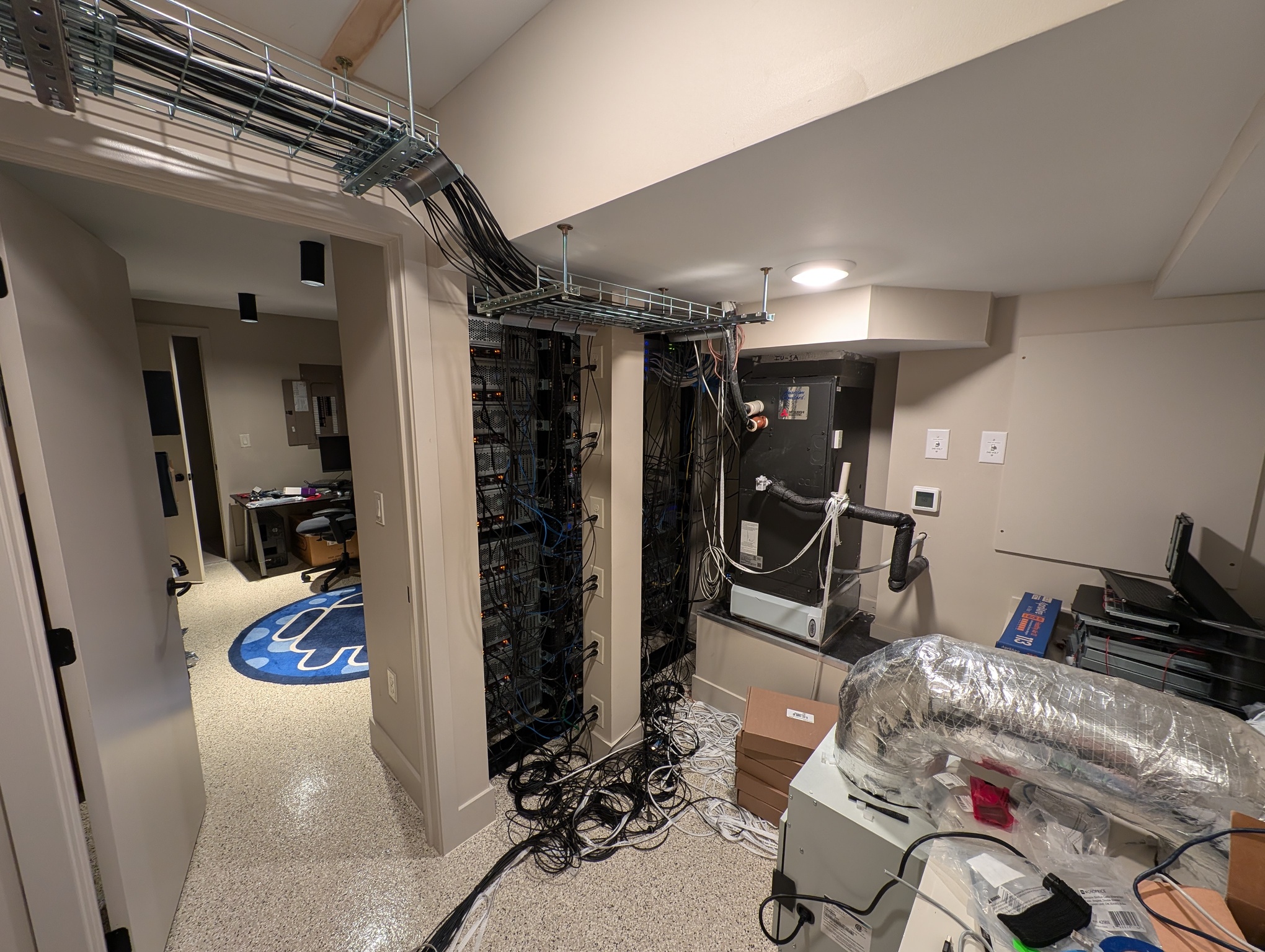
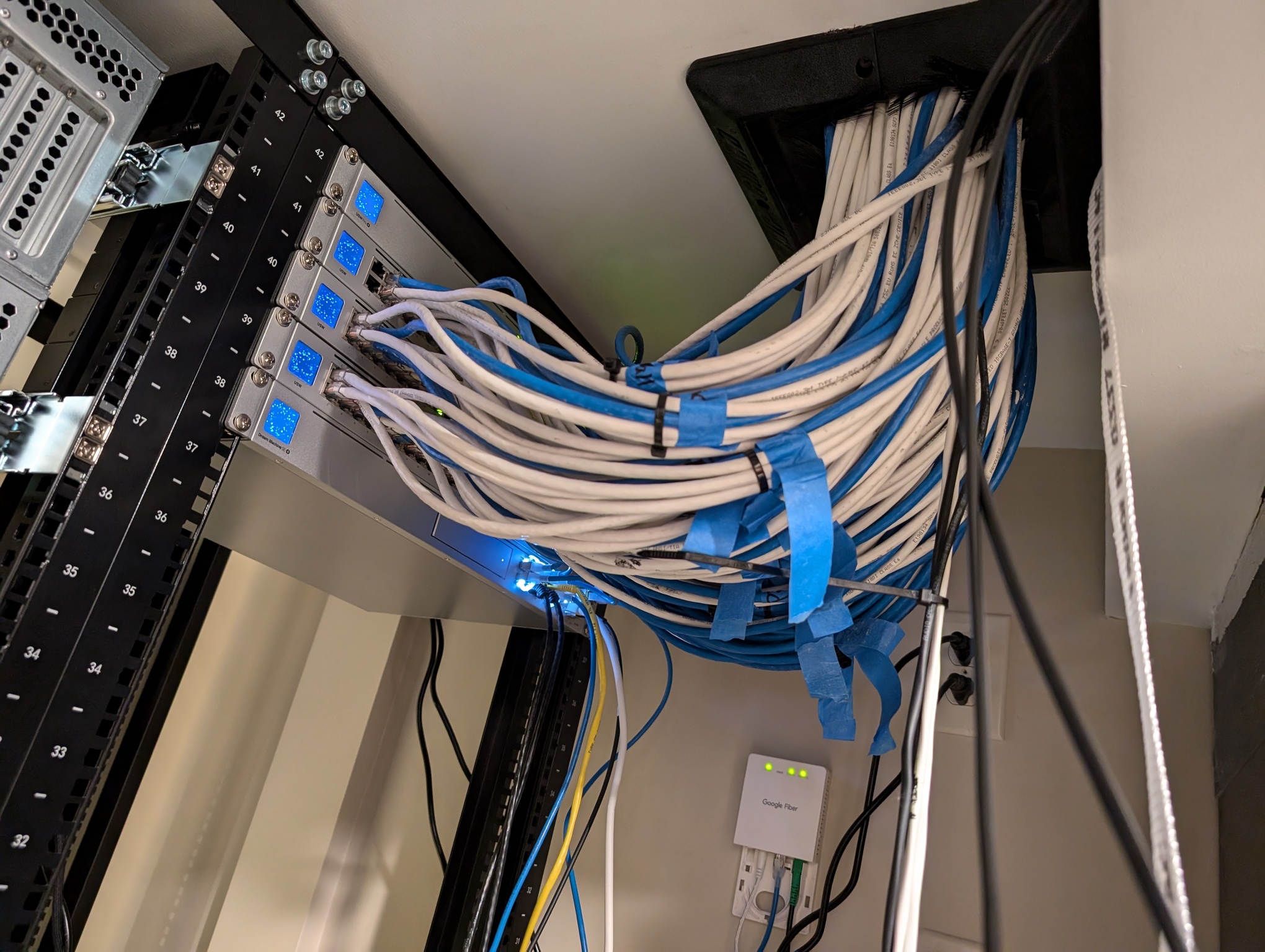
Lots of cat6:
All network equipment and cameras are UniFi.
Egads! This photo has made a lot of network engineers angry! Response in the Q&A.
2 Gbps fiber internet
This is the hardware before it went into the machines.
(Note: This was in 2023.)

Intel Core i5-13600
32GB RAM
GeForce RTX 4070
An insanely unstable motherboard with 10G ethernet on-board.
Don't buy this. :(
My (Kenton's) friends from junior high helped assemble the machines and pull the cables.

We've been doing LAN parties together for nearly 30 years.
Lester
Jesse
Peter
Kenton
This house has normal parts, too!

(Same room as above, after rotating right.)
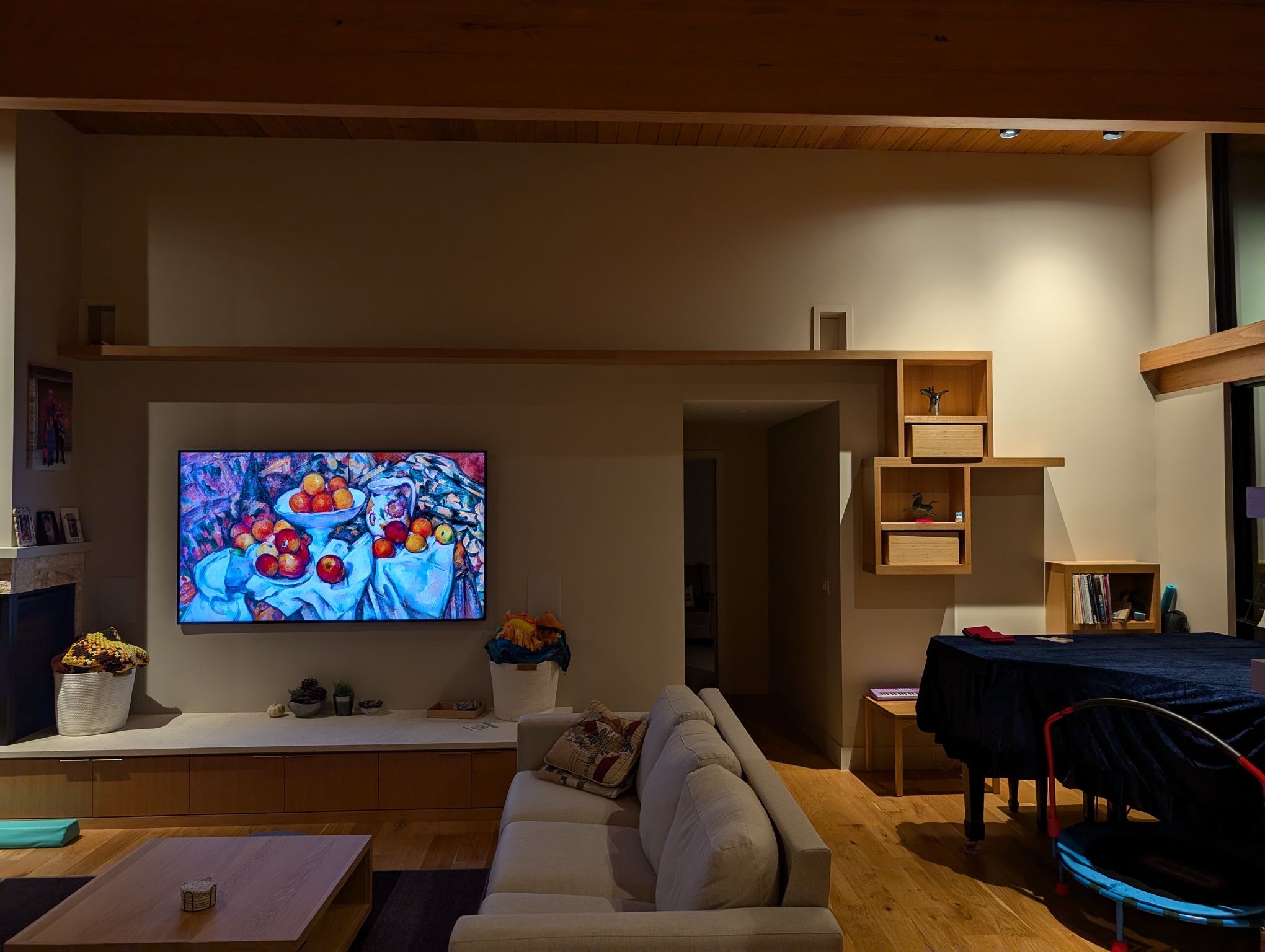
These shelves are designed for cats to climb.
Cat doors lead into kids' bedrooms.
Beds are lofted.
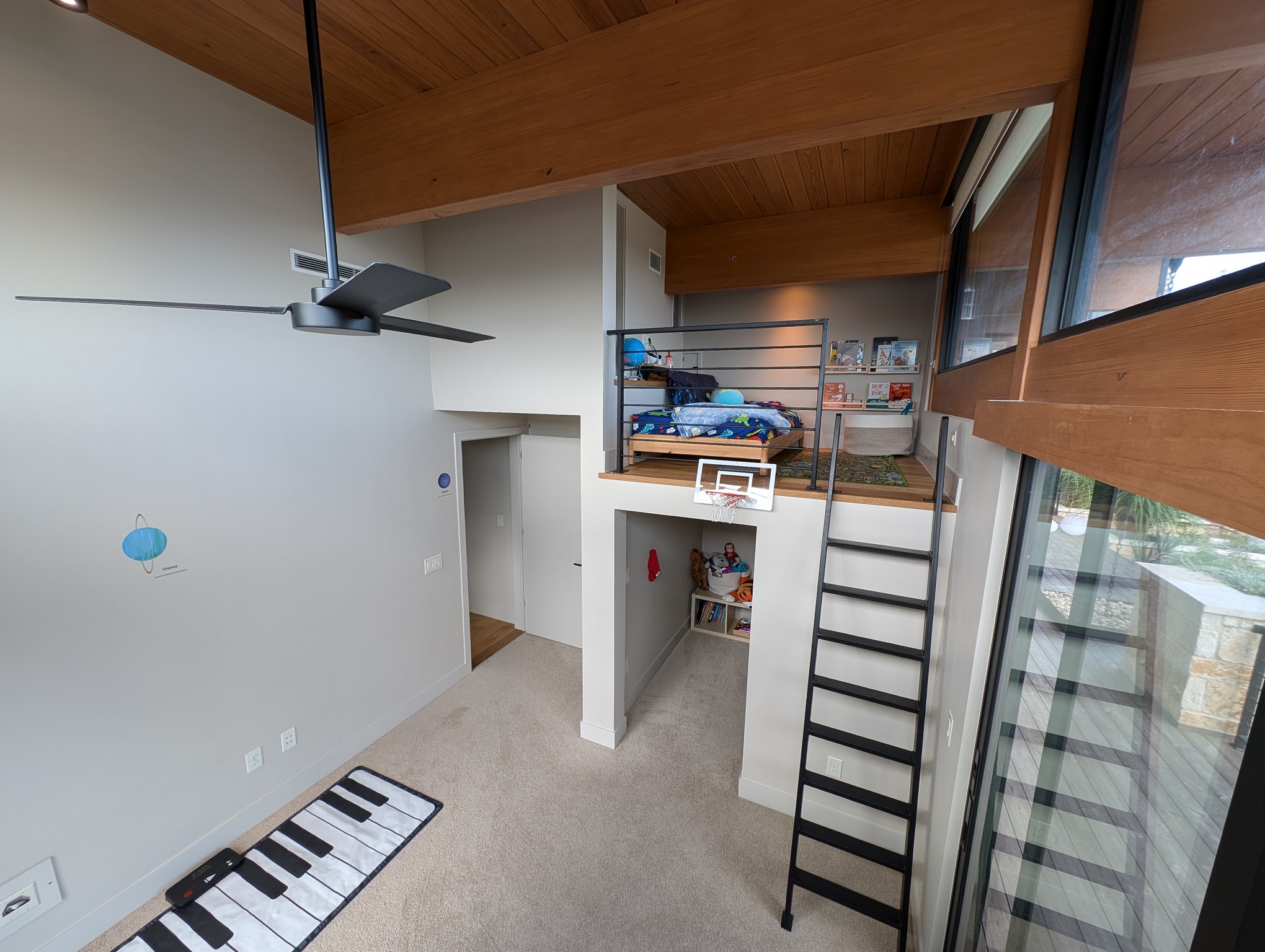
Hallway to other kid's loft.
(With lockable door.)
Cat door from living room.
6' closet below loft.
Cable conduit to engine room.
(For future computer desks, when they're older.)
The other kid's room is a mirror image of this.
Two call rooms allow taking meetings without bothering other people.
Of course, they are also game stations.
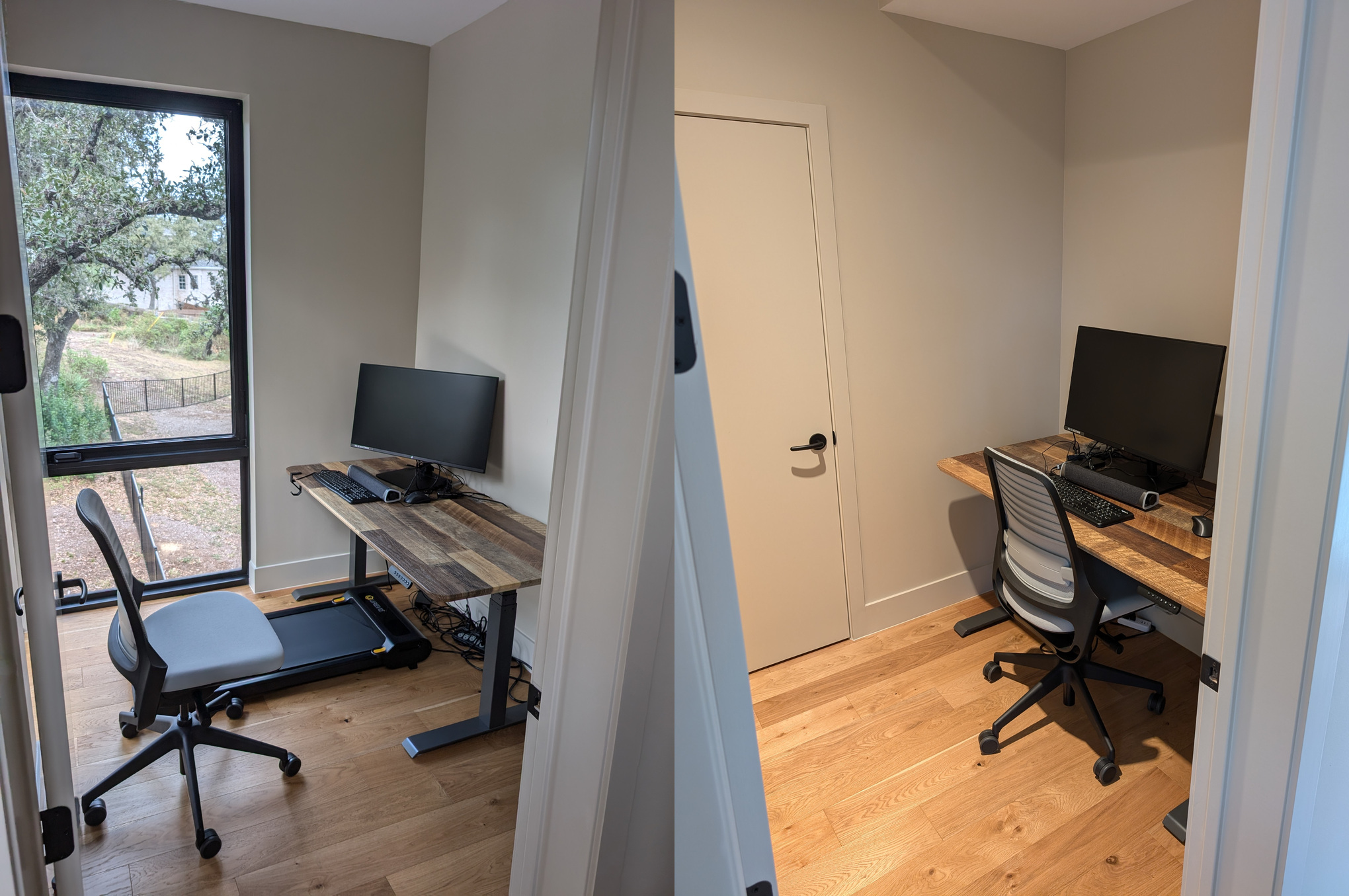
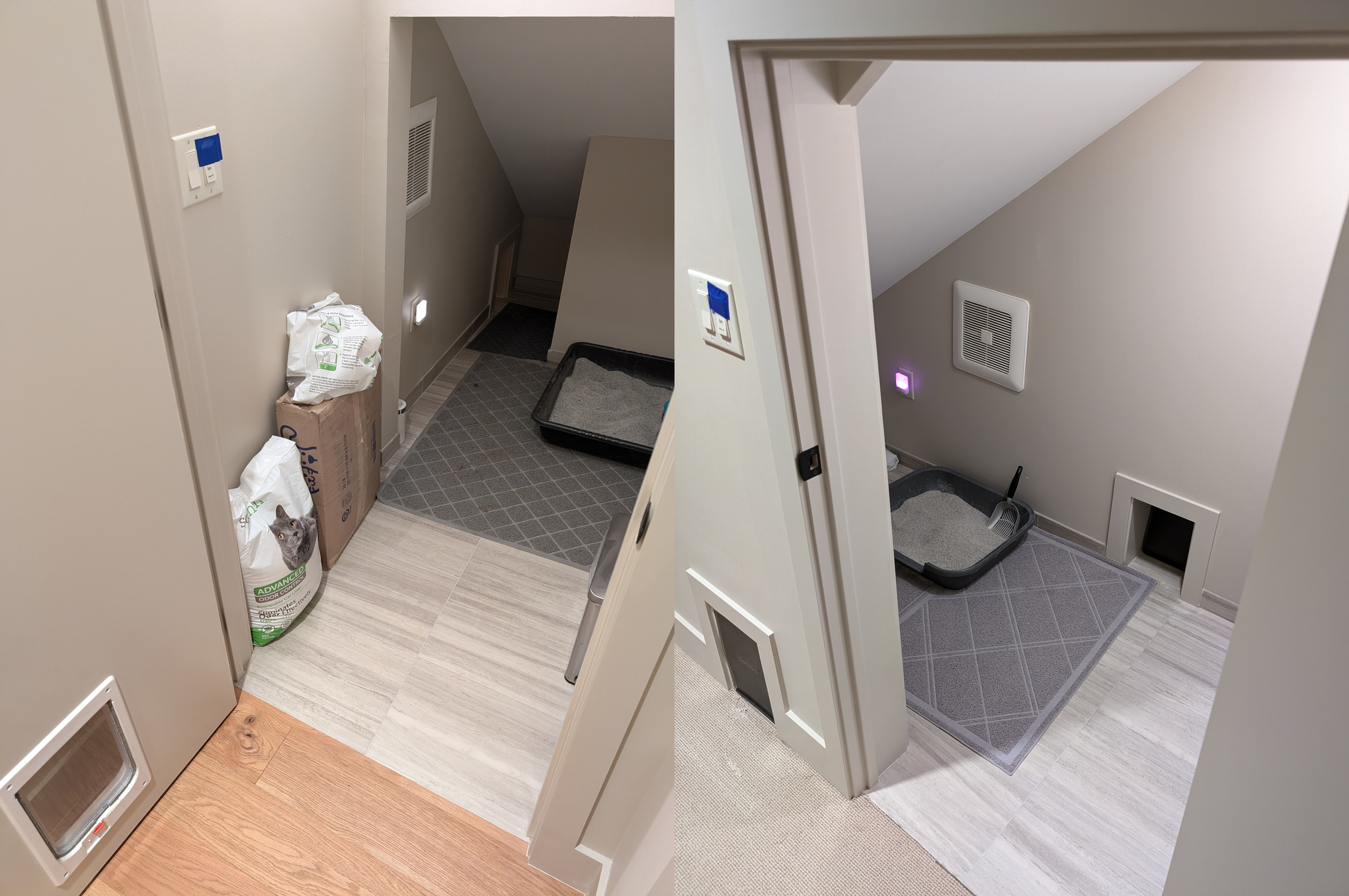
Exhaust fans
Cat doors allow cats access to bedrooms when human doors are closed.
Space under stairwells is dedicated to cat litter boxes.
We have two guest rooms for out-of-town visitors.
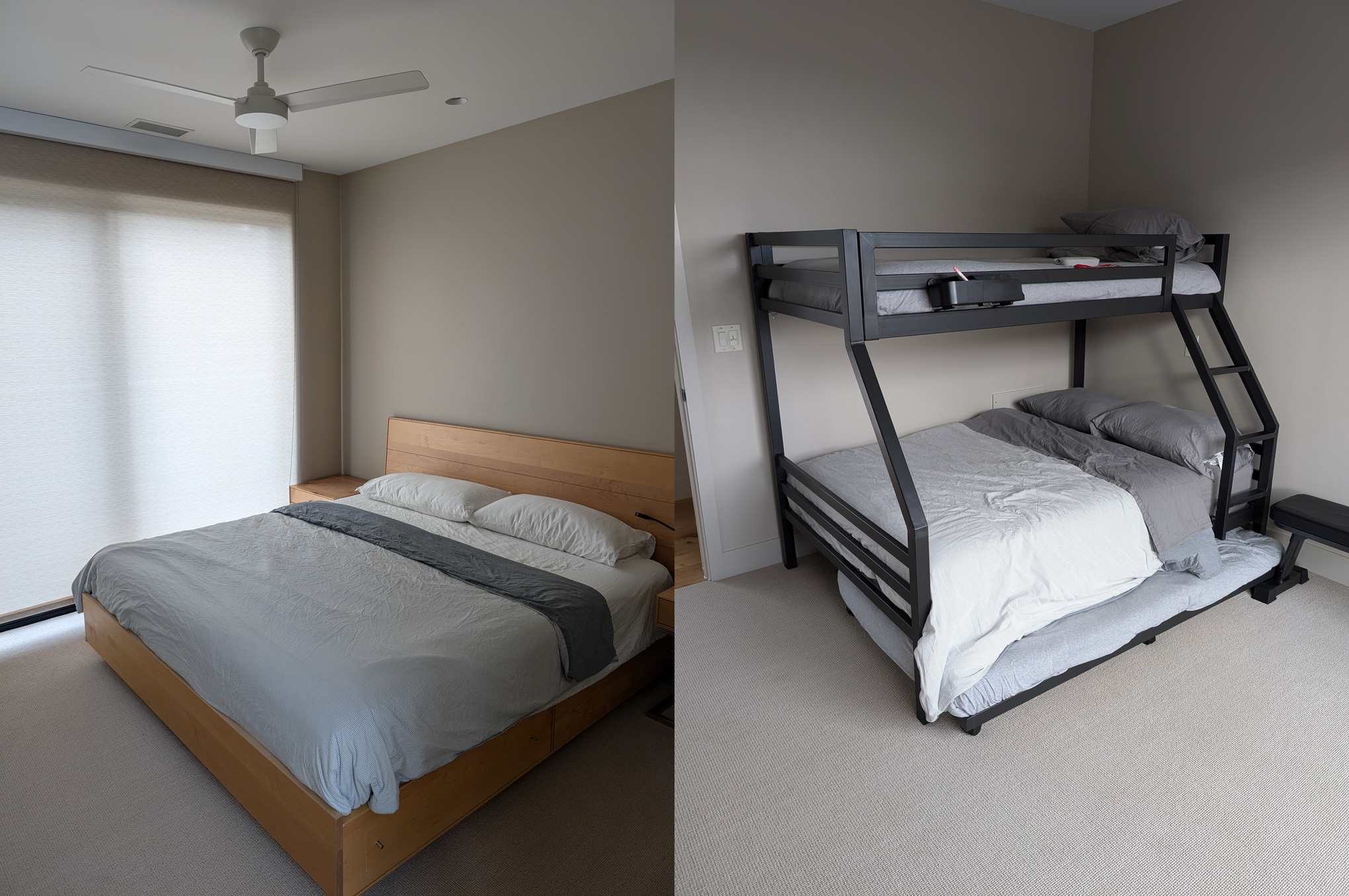
My favorite part of the house.
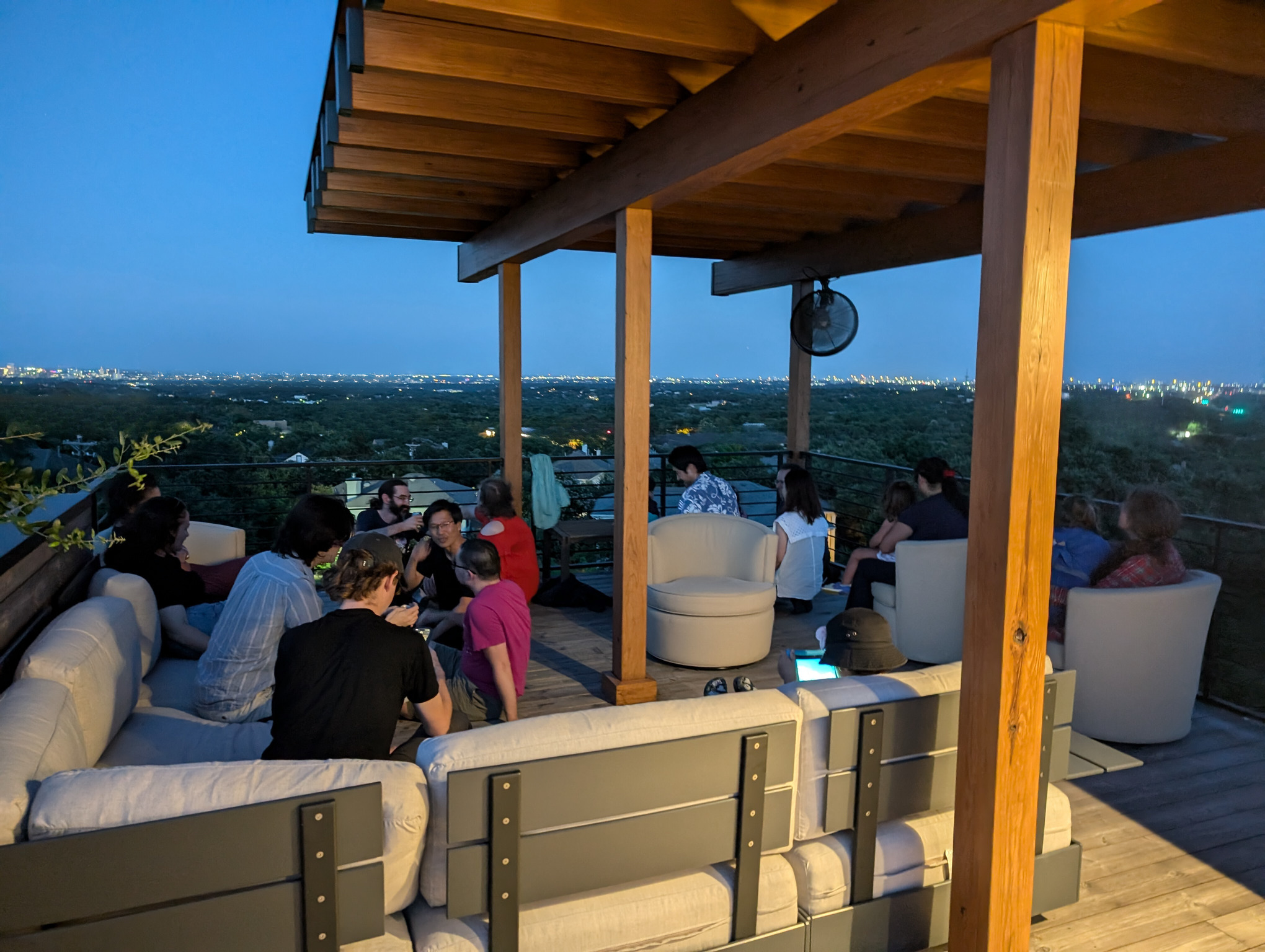
30-mile view
Misting fan, great in the heat!

Cat
We are Kenton Varda and Jade Wang. We've been married since 2014. This is our house, where we live with our two kids, in Austin, Texas.
Kenton is a software engineer. He:
Jade is an entrepreneur. She:
We bought the property as an empty lot and designed and built the house from scratch.
The lead architect was Richard Varda, Kenton's father. Rich is an accomplished architect who has designed everything from houses to skyscrapers. Among other things, he designed The Kingdom Centre in Riyadh, Saudi Arabia, and The Musical Instrument Museum in Phoenix, Arizona. Rich was also VP of Architecture at Target for many years.
Many features of the house were designed directly by Kenton and Jade. For example, Kenton designed the game station cabinetry, office conference table, cat shelves, conduit routing, and most technical features of the house.
Additionally, we worked with Thom Lasley and others at RSP Architects. RSP normally does commercial buildings, not houses, but Rich was working with RSP on other projects at the time and had known Thom for decades, so it made sense.
Blue Horse Building & Design was our general contractor who built the house.
The house was completed in late 2023. We originally bought the property in 2019, and began construction in mid-2021. Yeah, it took a while.
This site was designed and coded by Kenton with photos taken by Kenton, Jade, and Rich. We are neither web designers nor photographers. That's why the design is weird and the photos are kinda meh. Nothing on this site is sponsored.
Yes, someone did. Specifically, me (Kenton)! In 2011 I completed a LAN-party optimized house in Palo Alto, California, and it went viral. It, too, was in collaboration with my father (but I had not yet met Jade).
But contrary to what most people think upon seeing the pictures, the original LAN house was not very big: 1400 sqft. This made for a pretty awesome bachelor pad, but would have been a bit cramped for raising a family. The new house is much, much better.
I've never heard of anyone else having done anything like this. This surprises me! But, surely, if someone else did it, someone would have told me about it? If you know of another, please let me know!
In 2019, my team at Cloudflare was growing. But, most of the hiring was happening in the Austin office, while I worked from San Francisco. Meanwhile, with our first child on the way, Jade and I needed a bigger house, but we really could not afford to buy (much less build) anything bigger in Palo Alto.
I suggested to Jade: Should we move to Austin? Jade initially said no, because she wanted our kids to benefit from Palo Alto's school district. At the time, it was rated #12 in the nation. But, looking closer at the rankings revealed a surprise: The Eanes school district in Austin was #8. When I showed this to Jade, she changed her mind.
Ironically, just after we moved, covid hit, and Cloudflare became 100% remote. The original reason for the move—being closer to my team—became moot. In retrospect, we could have gone anywhere! Not that there's anywhere in particular that I think would have been better. It's just funny.
The 22 game machines (including monitors, cables, and peripherals) cost about $75,000 in total. The house overall was a 7-digit number. Sorry, I'm not comfortable being any more specific than that.
I actually find it funny how cheap computers are. The cabinetry around the game stations cost a similar amount to the computers powering them. Think about that! The cabinetry is just a bunch of wood, cut into fairly large pieces. Maybe a few screws and hinges. Whereas the computers in total contain more than a trillion transistors, each of which had to be carefully etched in the right spot connected correctly to all the others. A trillion! That's 1,000,000,000,000!
Of course, the point is, GPUs are mass-produced. Cabinets for game stations in LAN-party-optimized houses are, um, not.
This question also makes me uncomfortable, but I know from last time that people will ask it, and if I don't answer, people will make things up. So, OK, I will tell you.
I (Kenton) started my career at Google in 2005, which was a pretty good time to be there, even as a junior engineer. They gave me stock, and that stock went up. With no family and no hobbies aside from video games, money piled up in my bank account. After 4-5 years of saving, I was able to make a $200k down payment on a $1M construction loan (later converted into a mortgage). In many places that could have bought a mansion, but in Palo Alto it got me a tiny sliver of land and a 1400 sqft house. Still, I considered myself rich.
Then things got weird. The success of Google, Facebook, and others in Silicon Valley had produced a large number of people in the area with a lot of money, ready to buy houses and start families. Meanwhile, NIMBY policies were blocking all new development. As a result, Palo Alto housing prices, already high, went bonkers over the course of the 2010's. My house, which had cost me $1M, became worth over $2M.
This is absolutely unfair! I built the house so that I could throw parties and play video games with my friends. These do not seem like activities that are supposed to make money. But it made me a million dollars in profit. What?
So basically, we were able to parlay that into a bigger house in Austin. And just in time! While Austin housing prices had been growing for a while, they really exploded after 2020. We bought our property in late 2019. (Aside: Today, in 2024, Austin housing prices are now actually declining rapidly, due to an enormous amount of new housing having been built over the last few years. Yes, it can be done! Now is a great time to move to Austin!)
For completeness, I'll mention two other not-insignificant sources of money. First, Jade and I joined Cloudflare in 2017, a couple years before its IPO. This was a good time to join. The stock has done very well, even hitting a high point just as we started construction. Second, Jade has long been an active (albeit small-scale) seed-stage investor in startups. Before she met me, she invested in Matterport, in their very first funding round. They went on to become a public company. We were already in the process of moving to Austin before either Cloudflare or Matterport went public, so we didn't have any idea at the time how much they'd pay off. But they did, and this allowed us to expand scope.
Yes, we are very lucky!
It's where everyone goes to one place and plays multiplayer videogames with each player having their own computer, connected over a Local Area Network.
In the 90's, when internet connections were bad, LAN parties were popular among PC gamers. But when broadband got decent in the early 2000's, LAN parties largely died off, as people could now play multiplayer games without leaving the house.
But I think that sucks. For me, LAN parties were never just about the game. LAN parties are a social event, and the game is merely a catalyst. LAN parties serve very much the same purpose as normal parties serve for normal people, but the game makes it easier and more fun for introverts to be social. Indeed, LAN parties are so fun that they traditionally go all night long—much longer than your normie parties—because no one wants to stop.
My (Kenton's) first LAN party was for my 14th birthday, in 1996. We had four computers: a 486sx 25Mhz, a 486dx 33Mhz, a 486dx2 50Mhz, and a Pentium 120Mhz. We played Doom 2 all night long. It was the most fun I'd ever had.
That same year, I had another LAN party on New Year's Eve, which I have done every year since. At least two out of three (and usually all three) of my junior high friends from Minneapolis have attended every single time.
In total, I have hosted or attended probably over 100 LAN parties. All of them were at someone's house, typically with 8-16 people. I have never been interested in big commercial LAN parties with hundreds of attendees—at that point it feels no different than playing with randos on the internet.
We have an internet connection.
I originally thought this too. In fact, my first LAN party house was designed to let people bring their own box and quickly connect it to a station. But nobody ever did. Not once. Some people brought laptops, but they only ever used them if the game stations were all in use already.
I do feel a lot of nostalgia for the days of trying to pack four people, four computers, and four monitors into one car on the way to a friends' LAN party, setting up machines on haphazardly arranged card tables with questionable seating arrangements, daisy-chaining power strips and network hubs. I'm a little less nostalgic for the experience of trying to copy game files over the network to get everyone on the same version, or pitying the one friend who inevitably has to reinstall Windows and doesn't manage to get in-game until after midnight.
The fact is that, while these things were fun, they were Type II fun. And they made LAN parties inaccessible. Even the most enthusiastic of us didn't really want to do all that more than, like, 3-4 times a year, and a lot of people—even those who like games—really don't care to do it at all. I'm not even sure if I could do it anymore, as a 40-something with two kids!
With computers built-in and set up in advance, we can commence gaming essentially immediately upon enough people arriving. We can get a lot more people to participate. If someone can only drop by for an hour or two, they can still play. And we can do it all much more often: at one point I was hosting LAN parties every other weekend.
Some people feel REALLY strongly about this. A few have asserted that the whole setup is worthless because we have our backs to each other.
So, first of all, the office actually has everyone around a table facing each other. It's only the basement that has backs to each other.
In my opinion, though, facing each other is worse. You can't actually see the people on the other side unless you stand up, because the monitors are in the way. So, when we take a break between rounds to chat, everyone either has to get up, or talk over a wall. It's much nicer to just rotate in our chairs.
Additionally, the facing-each-other approach takes a lot more space. The game room is designed so that we can fold everything away, slide the couches away, and have a big empty space where we can do other things, like play DDR, watch movies, play VR games, or set up a workshop. If we had the game stations in the middle of the room then it wouldn't be a suitable space for any of that.
So, I think this was the right call. But I can certainly see opinions differing.
Lots of things. We are trying new games all the time.
In general, we prefer cooperative games, or at least team games. Most attendees are not actually hardcore gamers, so skill levels vary widely. In a free-for-all competitive game, one or two people tend to dominate while several can't get anywhere—that's not fun. Cooperative games allow everyone to participate according to their ability. Team competitive games allow us to carefully balance the teams, though this can be tricky.
Our favorite LAN game of the past five years is probably Deep Rock Galactic, in which the players are a team of space dwarves mining an alien planet for resources. Prior to Deep Rock, Left 4 Dead 2 served the same purpose, or TF2 Mann vs. Machine mode.
We have also played quite a few survivalcraft basebuilder games, such as Ark or Factorio.
We played a lot of Overwatch, back when it was good, often with us on a team against internet randos, and occasionally team-vs-team entirely within the house.
We still play Unreal Tournament 2004 regularly, usually in Assault or Onslaught mode.
No. Sorry, you must be invited. I'm sure you understand: For security reasons, we can't just let random people on the internet into our house.
If you want to get invited, you need to figure out some way to get to know one of us, or one of our friends who can vouch for you.
One straightforward (albeit not easy) way to get an invite is to get hired at Cloudflare. ;)
No. Everyone logs into their own Steam/Epic/etc. accounts, and must buy the game we are playing. We do, however, try to preinstall everything people might play. Fortunately, Steam and similar game launchers are able to use the same copy of the game for all users.
I don't! I maintain a single disk image for all the machines. Before the party starts, I will install all needed games and updates on that single disk image. The machines all boot off of a network drive based on this image. Each machine gets a copy-on-write overlay on top of the main image, so that guests can make changes to their machine which won't be seen by any other, and will be deleted at the end of the party.
I have put all the scripts I use for this up on GitHub.
For the game machines, I mostly targeted the Logical Increments "Outstanding" level, which aims to stay just under the inflection point where high-end price gouging sets in. This hardware was purchased in mid-2023, so obviously it's no longer the best choice today. But here it is:
Also, in case you are wondering:
To be honest, when I've used more-expensive "gaming" keyboards and mice I have never actually liked them. I mean, they are fine, but I don't feel like I get any benefit. If anything there are drawbacks: they tend to have extra buttons that enable gimmicky features which only mess me up when I touch one of those buttons by accident. And they tend to be loaded with RGB, which I just don't care about. So I see no reason to spend money on any of that.
Note that for work purposes, I absolutely need a better keyboard. (I use a Kinesis Advantage 360.) But for WASD purposes, the cheapest possible keyboard is all I want. When it comes to mice, for either work or gaming, I want something that has five buttons and fits reasonably in my (large) hand but that's all.
With all that said, guests are welcome to bring their own keyboards and mice if they like. Each station has a USB hub where you can plug in your favorite peripherals.
Honestly I never even thought about it. I haven't used a mousepad in decades. None of my friends ever commented on it. But I guess it might be a good idea, to prevent wear on the wood finish.
Honestly, it really isn't. I know it sounds weird, but in my experience it's just no big deal to be able to hear a bunch of other people's sound around me. It doesn't seem to detract from the game. In some cases it's nice to be able to hear what my teammates are up to.
Of course, if we are playing a team vs. team competitive game, we wouldn't want teams hearing each other's sound. But in that case we have one team go to a different room entirely. Or if we're playing a game like Dead By Daylight or Last Train Outta' Wormtown, where one person is the monster against everyone else, then that person goes to one of the call rooms.
It's true that without headphones, you lose positional audio. That might matter in some games, but mostly in the games we play, it doesn't matter much.
The down side of headphones is that it would make it harder for us to talk to each other. Sure, you can get open-back headphones. But it's still creates a psychological barrier between people, which works against the point of being together at a LAN party.
And honestly, would you really want to use loaner headphones that who-knows-how-many people have sweat into? Seems kinda gross?
With all that said, players who want to use headphones are absolutely welcome to bring their own, just as with keyboards and mice. Every station has a USB hub where you can plug in whatever you want.
OK, yeah, this was a mistake.
I'm a software guy, and my experience with physical networking is limited to homes. Before I posted this site, I honestly didn't know what a "patch panel" was.
The subcontractor who pulled all the cat6 cable in the house was someone who does AV systems in houses, not commercial networking. He was chosen by my general contractor, who also obviously specializes in houses. He was a good guy! But in retrospect, given the scope, it might have made sense for me to insist on finding a network contractor that normally does commercial buildings. Anyway, the guy asked if I wanted him to crimp the cables, and I said "uhh well I certainly don't want to do it, so yeah?", and so he did. I don't think he mentioned patch panels, or if he did, I didn't understand what he meant. Then when I moved in, I mounted these Unifi switches, shoved all cables into them, and called it a day.
I now understand that I should have asked the contractor to terminate all the cat6 into "patch panels", that is, rows of RJ45 sockets. I could then use patch cables to connect those to the actual switches. This way, the in-wall cables never move at all, therefore are at minimal risk of being damaged somehow. Also, I could nicely label each one, and easily reconfigure what is connected to what. I wish I'd done that!
That said, in practice I mostly don't have a need to treat any of these cables specially (except that the PoE devices need to be connected to the PoE switch). I'm happy managing my network entirely in software.
By the way, the game machines are not actually connected to the switches in the photo. There is a separate USW EnterpriseXG 24 further down the rack, providing 10G networking to those machines (and allowing them to utilize the full 2G internet bandwidth).
The long DisplayPort and USB cables range from 35 to 100 feet, depending on the specific location. All cables are Monoprice SlimRun, which are fiber optic. The speed of a signal in fiber optic cable is about 2/3 the speed of light, and light travels at about 1 foot per nanosecond, so 100 feet of fiber would add about 150ns of latency. Thats 0.00015ms. Wheras at 144Hz, you see one frame per 7ms. In other words, no, the cable length does not add any meaningful latency. (For what it's worth, signal propagation in copper cables is similarly fast, but high-bandwidth signals in copper tend to degrade more quickly over long distance.)
Frankly, it would cost more, perform worse, and I'm not even sure how to set it up. Games are resource-intensive. A high-end game will fully utilize the machine's GPU, CPU, and RAM, so there's no real efficiency to be gained by packing more players onto fewer machines. If you wanted to put four players on one machine—if the software even exists to make it work—you'd need a machine with 4x the cores, 4x the RAM, and probably four separate GPUs. To do that you have to dive into "enterprise" hardware that gets extremely expensive. Building four separate machines is actually cheaper, and doesn't require any special virtualization layer.
Generally, I try to avoid any cloud-dependent home automation.
For security cameras, we use UniFi Protect. I am very happy with these. They will reliably wake me up if a human approaches my house in the middle of the night, with very few false positives.
I wrote my own baby monitor that simply combines the audio from two UniFi cameras placed near my kids' beds and makes the stream available via a web page. I like it much better than the off-the-shelf monitors we were using before!
I intend to set up Home Assistant eventually, but haven't gotten around to it yet.
Yes, but not because of the computers. The computers are off most of the time; I only turn them on for parties. Most of our energy usage goes to heating and cooling. We have efficient heat pumps and solar panels, but it's still a disturbing amount of energy usage and something I'm trying to debug. Perhaps we have too many windows letting in too much sunlight...
We had a subcontractor designing the HVAC system. I told him that there needed to be a dedicated air conditioner for the server rack. He sort of rolled his eyes and said sure.
Later, when I got the design, there was no AC for the server rack. We had a conversation:
Me: Where's the AC for the server rack? We really do need AC in there.
Him: I mean, how many servers do you have?
Me: Well, if all the machines are running at full power playing a high-fidelity game, they could be consuming 15kW of power and turning it all into heat.
Him: (skeptical) That would be by far the largest server rack we've ever seen in a residential setting.
Me: I would expect so, yes.
Our philosophy with the cat doors is that we want to be able to close our bedroom doors while still allowing cats to enter. If we locked our cat out of our bedroom, he would meow all night long, and worse, we wouldn't get cuddles. But, leaving the bedroom door open sacrifices privacy. Solution: Cats get their own doors.
We owned a Cat Genie for a while in Palo Alto, and honestly it was terrible.
If the robot arm failed to scoop the poops (which it often did, especially if they were too soft) then it would wash the litter—poop still inside—and then blow-dry it—poop still inside—and the whole house would smell like cooked poop!
Also the process took 45 minutes and if Garply decided he needed to relieve himself in the meantime he'd do it on the floor.
Also the inside of that thing was horrid to clean out. Imagine opening a complex mechanical device to find someone had spread peanut butter over every component except it's not peanut butter, it's poop.
People have told me that there are other automated litter boxes that are much better than the Cat Genie. Maybe so. But, my take-away is that poop and complex mechanical devices just don't mix. It only takes a couple minutes a week to scoop poops, so I'd rather not risk it again.
Pretty often! I try to exercise most days and alternate between DDR, biking, and swimming. Of these, DDR really has the best fun/work and work/time ratios. Jade plays, too. I've been playing for over 20 years but my skill plateaued a while ago at "not quite competitive" levels...
There are some obscure versions of DDR, and an old unofficial build of Stepmania, that supports four pads. I haven't actually gotten around to trying them yet, but I intend to at some point, and if I end up having to make my own Stepmania fork, so be it. I've been thinking about an algorithm to convert "doubles" step charts into "quads", where one person uses all four pads.